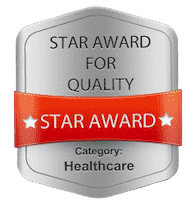Treatment of Tennis Elbow in Homeopathy include a detailed assessment before starting a treatment. There-after specially formulated homeopathy medicines for tennis elbow are prescribed by your specialist at Welling Homeopathy Clinics for faster relief from pain, better movement and complete cure from tennis elbow without surgery. We have advised over 4230 patient of tennis elbow in the last 10 years from 108 countries and we are sure our specially formulated Homeopathy treatment for tennis elbow can surely help you get cured.
Why Welling Homeopathy Medicines for Treatment of Tennis Elbow?
- Custom-made Homeopathy medicines for Tennis Elbow are proven to work in our patients from 108 countries,
- Trust, quality, and assurance of 81-year-old legacy of Welling family in practising Homeopathy,
- The homeopathy treatment for Tennis Elbow can help you get cured of Tennis Elbow,
- Its takes around 6-12 months for permanent cure,
- You get faster pain and movement relief with our newly researched homeopathy medicines by the legendary Indian Homeopathy doctor Dr.Sourabh Welling,M.D.
Call +91 8080 850 950 to book an appointment or to consult and order online. Consult our specialists today for a detailed evaluation and to start your customised Homeopathy medicines for bipolar disorder.
What is Tennis Elbow?
 The pain of tennis elbow occurs primarily where the tendons of your forearm muscles attach to the bony prominence on the outside of your elbow. The pain may result from tiny tears in the tendon.
The pain of tennis elbow occurs primarily where the tendons of your forearm muscles attach to the bony prominence on the outside of your elbow. The pain may result from tiny tears in the tendon.
Tennis elbow (lateral epicondylitis) is a painful condition that occurs when tendons in your elbow are overloaded, usually by repetitive motions of the wrist and arm.
Despite its name, athletes aren’t the only people who develop tennis elbow. People whose jobs feature the types of motions that can lead to tennis elbow include plumbers, painters, carpenters and butchers.
The pain of tennis elbow occurs primarily where the tendons of your forearm muscles attach to a bony bump on the outside of your elbow. Pain can also spread into your forearm and wrist.
Rest and over-the-counter pain relievers often help relieve tennis elbow. If conservative treatments don’t help or if symptoms are disabling, your doctor might suggest surgery.
Causes and Risk Factors of Tennis Elbow
Tennis elbow affects up to 3% of people, mostly between the ages of 30 and 50.
Any activity that strains the muscles around your elbow over and over again can cause tennis elbow.
In tennis, hitting a backhand puts some stress on your forearm muscles, which clench when you hit the ball. If your technique is off or if you grip the racquet too tightly, it puts more stress on the tendons that connect your forearm muscles to your elbow. That can cause the tendons to get small tears.
You can get tennis elbow from playing other racquet sports, such as squash or racquetball. You can also get it from jobs or activities that involve repetitive arm motion, such as:
- Cutting down trees with a chain saw
- Painting
- Carpentry
- Playing some types of musical instruments
- Kitchen work, such as cutting with a knife
- Plumbing
- Working on cars
- Working on an assembly line
- A direct blow to your elbow can also make the tendons swell.
Source: webmd.com
Symptoms of Tennis Elbow
Tennis elbow affects 50 percent of tennis players.
The most common symptom of tennis elbow is recurring pain on the outside of the upper forearm, just below the bend of the elbow. Pain may also be felt further down the arm, towards the wrist.
Pain can occur when the individual lifts or bends the arm. It is also felt while performing basic actions, such as writing or when gripping small objects.
Tennis elbow can cause pain when twisting the forearm. This can be noticeable when turning a door handle or extending the forearm fully.
Signs of Tennis Elbow
Point tenderness over the lateral epicondyle a prominent part of the bone on the outside of the elbow
Pain from gripping and movements of the wrist , especially wrist extension (e.g. turning a screwdriver) and lifting movements Symptoms associated with tennis elbow include, but are not limited to, radiating pain from the outside of the elbow to the forearm and wrist, pain during extension of wrist, weakness of the forearm, a painful grip while shaking hands or torquing a doorknob , and not being able to hold relatively heavy items in the hand.
The pain is similar to the condition known as golfer’s elbow , but the latter occurs at the medial side of the elbow.
Source: en.wikipedia.org
Exams and Tests for Tennis Elbow
Your health care provider will examine you and ask about your symptoms. The exam may show:
Pain or tenderness when the tendon is gently pressed near where it attaches to the upper arm bone, over the outside of the elbow
Pain near the elbow when the wrist is bent backward against resistance
An MRI may be done to confirm the diagnosis.
Source: medlineplus.gov
What is the Treatment of Tennis Elbow?
The first step is to rest your arm for 2 or 3 weeks and avoid or modify the activity that causes your symptoms. You may also want to:
Put ice on the outside of your elbow 2 or 3 times a day.
Conventional doctors would suggest to take NSAIDs, such as ibuprofen, naproxen, or aspirin.
If your tennis elbow is due to sports activity, you may want to:
Ask your coach about any changes you can make to your technique.
Check the sports equipment you are using to see if any changes may help. If you play tennis, changing the grip size of the racket may help.
Think about how often you play, and whether you should cut back.
If your symptoms are related to working on a computer, ask your manager about changing your workstation or your chair, desk, and computer setup. For example, a wrist support or a roller mouse may help.
A physical therapist can show you exercises to stretch and strengthen the muscles of your forearm.
You can buy a special brace (counter force brace) for tennis elbow at most drugstores. It wraps around the upper part of your forearm and takes some of the pressure off the muscles.
Your provider may also inject cortisone and a numbing medicine around the area where the tendon attaches to the bone. This may help decrease the swelling and pain.
What happens if a tennis elbow goes untreated?
If the tennis elbow is not treated in time or the activity is continued, that basically caused tennis elbow in the first place than it can lead to permanent damage to joint movement and complete retirement from that sport. Though we don’t suggest panicking and running for surgery or steroid injections. We want you to do a intelligent assessment if you want to go through the rest and staying away from the sports after surgery or repeated injections once you start the process.
Homeopathy Treatment of Tennis Elbow
If you don’t want to go through repeated steroid injections or surgery then specially formulated Welling Homeopathy treatment can be your best option for complete cure. Usually post surgery you would need a rest of 3-4 weeks before you can start training for professional sport again. If that looks too much to cut you off from professional sport than I would suggest seeing our specialist at Welling Clinic for a detailed assessment.
How long does Tennis Elbow take to heal?
The duration for treatment of tennis elbow can vary from few days to few weeks, but you can start gradual training again under advise from your specialist at Welling Clinics to progressively get your movement back and get pain under control.



